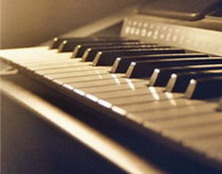Newest Songs
Name of the Song
Artist
Views
Top Piano Sheets
I Believe - Nikki Yanofsky Piano music
Piano Music for No Air by Jordin Sparks And Chris Brown (Ver. 4)
Second Chance - Shinedown (Ver. 3) Sheet music
Morning Has Broken by Cat Stevens (Ver. 5) Piano Music
Ida Lupino - Carla Bley Piano music
All I Want For Christmas Is You by Mariah Carey Sheet Music
Who Am I by Casting Crowns Piano Sheets
Elvina Hall Piano notes for Jesus Paid It All
Honey And The Bee by Owl City Sheet Music
Linkin Park Piano notes for What I've Done (Ver. 4)
Piano Music for No Air by Jordin Sparks And Chris Brown (Ver. 4)
Second Chance - Shinedown (Ver. 3) Sheet music
Morning Has Broken by Cat Stevens (Ver. 5) Piano Music
Ida Lupino - Carla Bley Piano music
All I Want For Christmas Is You by Mariah Carey Sheet Music
Who Am I by Casting Crowns Piano Sheets
Elvina Hall Piano notes for Jesus Paid It All
Honey And The Bee by Owl City Sheet Music
Linkin Park Piano notes for What I've Done (Ver. 4)
Newest Piano Sheets
The Story by Brandi Carlile Piano Music
42 by Coldplay (Ver. 2) Sheet Music
My Chemical Romance Piano notes for Helena
18 Till I Die - Bryan Adams (Ver. 3) Piano Sheets
Who Am I - Casting Crowns Piano Sheets
Cat Stevens Piano notes for Morning Has Broken (Ver. 5)
Jesus Paid It All - Elvina Hall Piano music
No Air by Jordin Sparks And Chris Brown (Ver. 4) Sheet Music
Sheet Music for Honey And The Bee by Owl City
Sheet Music for Second Chance by Shinedown (Ver. 3)
42 by Coldplay (Ver. 2) Sheet Music
My Chemical Romance Piano notes for Helena
18 Till I Die - Bryan Adams (Ver. 3) Piano Sheets
Who Am I - Casting Crowns Piano Sheets
Cat Stevens Piano notes for Morning Has Broken (Ver. 5)
Jesus Paid It All - Elvina Hall Piano music
No Air by Jordin Sparks And Chris Brown (Ver. 4) Sheet Music
Sheet Music for Honey And The Bee by Owl City
Sheet Music for Second Chance by Shinedown (Ver. 3)
Random article
Everything about piano sheet music Sheet music has a history of its own, dating back to the 19th century. In those days, musicians would play classic compositions using sheet music piano. Later on, when bands started performing, music sheets were back in vogue as a means to recreate these old compositions.
What is it?
Sheet music is nothing but a written notation of the piano notes. Depending on what musical composition the sheet music is for, the musical notes written will also differ. Most people have a wrong notion that it is only the popular compositions, which have recorded onto sheet music piano. However, several unfamiliar compositions have also been recorded using sheet music.
(More...)
Pictures




